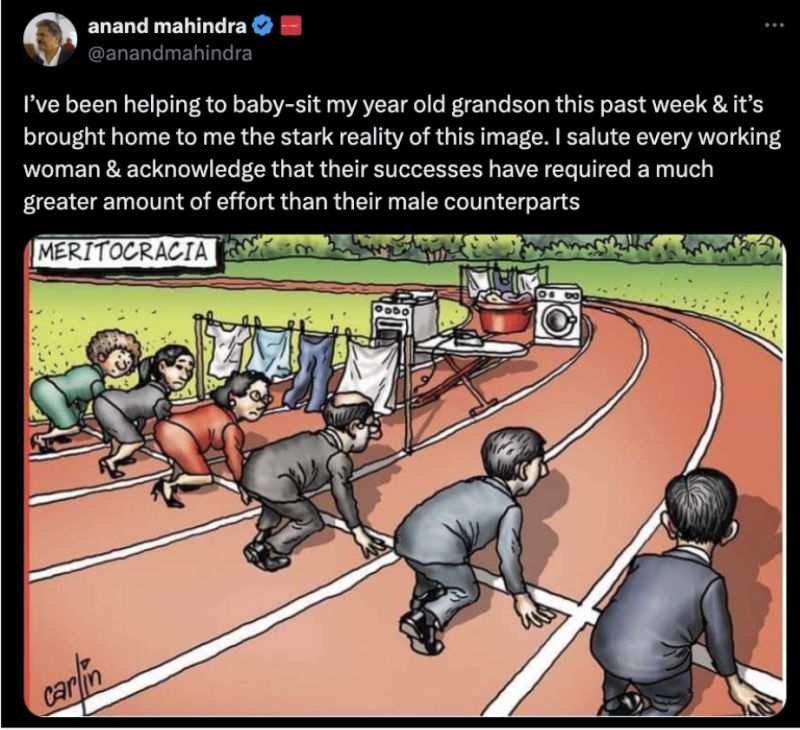Over the weekend, I was mildly annoyed with a publication over their lack of female representation in a leadership piece they had written, and I called them out for it on LinkedIn. That mild frustration festered into a rage over the weekend simply because even in the year 2024, we still need to repeatedly have conversations about why representation is important. We are still very much in a world where we celebrate toxic ‘boys clubs’ and believe that the token Women’s Day lists and articles celebrating “female leaders” is enough. I keep getting reminded of the illustration that Anand Mahindra made popular on X (erstwhile Twitter) five years ago, showcasing the additional hurdles that women need to go through to make it to the top.

Sadly, not much has changed, you have the few households where the husbands are celebrated for doing the bare minimum to help out in the house, especially when the women are doing more than their fairload to bring home the income. Even in the ‘equal’ households, women are predominantly bearing the brunt of the mental load associated with the housework. The behaviour at home will never evolve unless we see change in the way women are portrayed in the media or in the advertising we see today.
Last year, in December 2023, UN Women worked with Advertising Standards Council of India (ASCI) to launch a study on diversity and inclusion in Indian advertising, and the numbers highlight the points I am making above, close to half (48%) of the people surveyed expressed the need for more inclusive representation by brands, and India was ranked in the bottom tier when it came to how it stood on the Social Progress Index. According to the report, when it comes to female representation the issue is not of ‘presence’ but of stereotyping - most women presented in ads have fair skin and there is very little physical diversity showcased for women, they are also usually presented as younger and as caregivers. The women are portrayed to not be as authoritative as their male counterparts.
There has definitely been an evolution in the portrayal of women across the media, but the job is far from over, and we need to continue to fight the cliches. There are three buckets that women characters fall in across our ads: they are either objectified as sex symbols, they are presented as homemakers/caregivers or they are presented as ‘super women’ who can do everything under the sun, which is setting unrealistic standards and expectations on working women today.
We have a long way to go before roles become gender agnostic, and the least we can do in the media industry is make sure we are working towards equitable representation, or at the very least, acknowledging the women who smash the glass-ceiling when we write about leadership.
The author is India market lead, Duolingo English Test. She is also part of Manifest's advisory committee.

.jpg)









